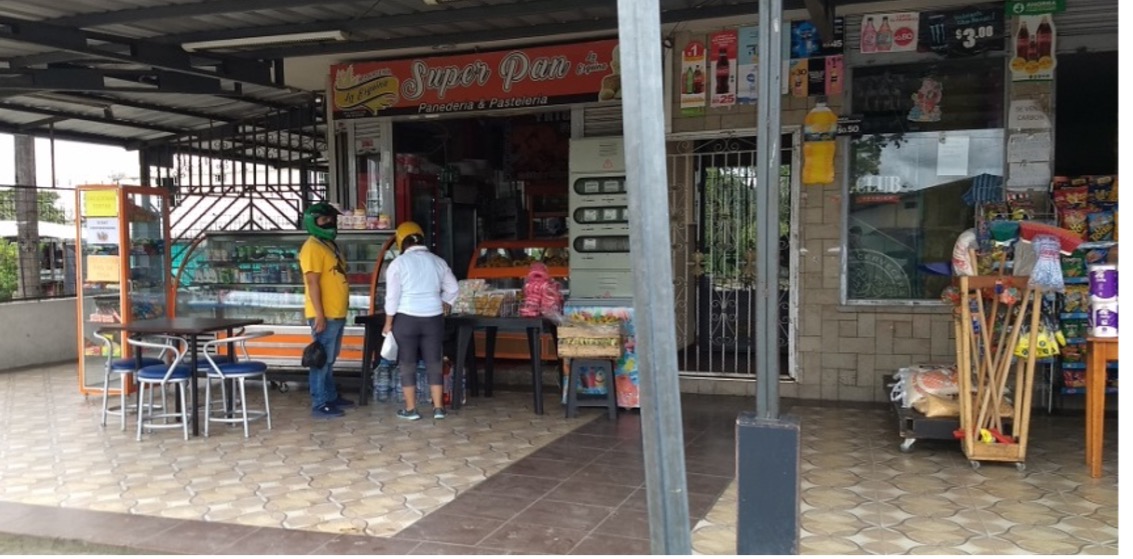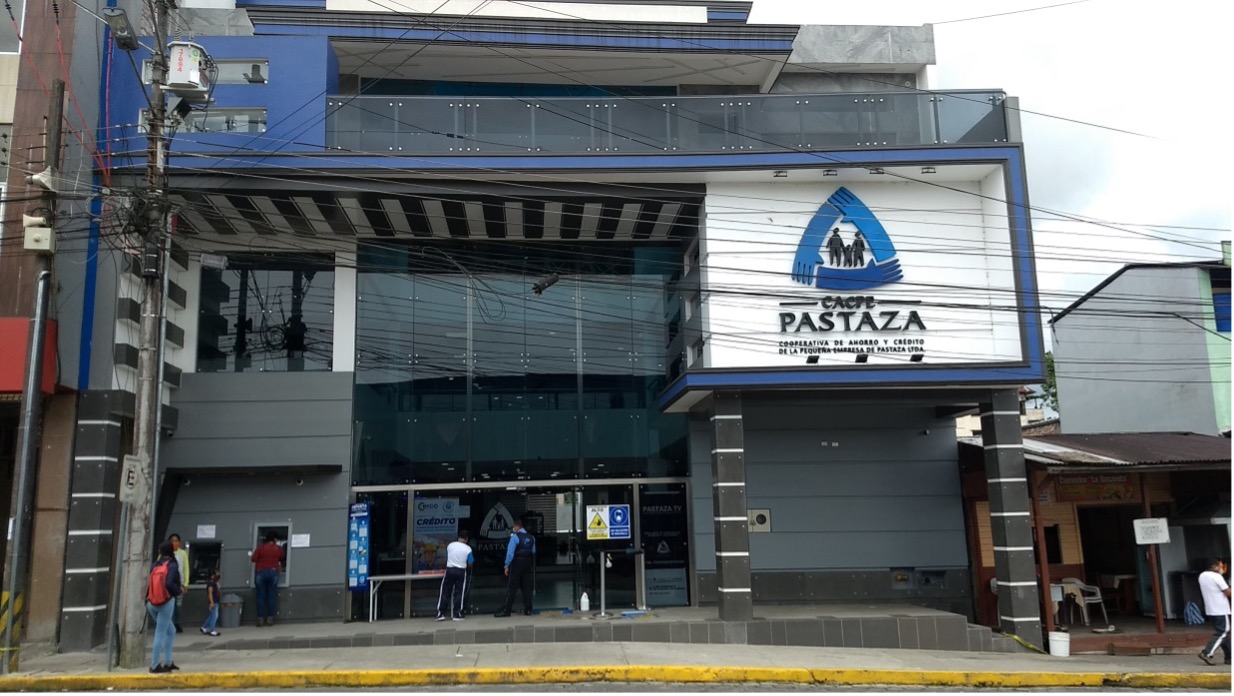One morning in April, Patricia received a call from her niece, Elisa, who told her that she had heard on the news that an emergency cash aid was being offered. With a certain premonitory optimism, Patricia told her aunt, "lend me your ID card, auntie, to see if you got selected." Patricia, thinking she didn't have anything to lose, gave her ID number. Elisa, who lives in the Amazonian city of Puyo, unlike her aunt, has a computer and internet connection and soon passed on the good news. Patricia had been selected to receive two payments of 60 USD in April and May.
It couldn´t have been timelier. Patricia has 2 cows and depends on the milk for her survival. Before the pandemic, Patricia sold her cheeses once a week to a bakery in Puyo, the closest city, located 27 km from her home, and earned $ 9USD a day. "With the pandemic, I could no longer go to Puyo, and I had to sell the cheese here to the neighbors, but at a lower price than in the bakery." Patricia's dairy activity became the main income of her family since her father, who lives on the same farm, had lost all the naranjilla harvest because he could not travel to sell it in Ambato. Also, a recent machete cut he suffered on his foot left him convalescing without the benefit of farmer insurance.
In Ecuador, financial exclusion and the digital divide limit the delivery of monetary aid to those who need it most. The Family Emergency Protection Bond was implemented with a budget of USD 114 million for 950,000 selected beneficiaries, of which 88% were women. In terms of delivery, the number of payment locations was increased from 3,500 to 10,300 by enabling bank branch stores at the neighborhood level. However, the delivery of this aid did not reach all of its intended beneficiaries. According to the information available in InfoMies, with data updated to April 2020, 13.16% (20,000 people) from rural areas did not collect their bonus. They either never found out they had been selected, or they couldn't clear all the obstacles to collect their benefit. The route described below is the successful case of Patricia, who managed to collect the bonus. However, it illustrates the effort in time, expenses, and mobilization of external support to access monetary aid in a rural context.
Patricia's route to collect the emergency cash aid in Puyo.
Patricia shares, "At that time, there were no buses, so I had to find a neighbor with a car and a license plate number allowed to circulate to take me to Puyo." Also, to access the monetary aid could not be retrieved on any day of the week, but rather the day which corresponded to Patricia, according to the last digit of her ID. She kept in mind that by 2:00 pm, she would have to be back, complying with the curfew and, therefore, make the best use of her time in Puyo. That morning, Patricia had got up earlier than usual. At dawn, she had to organize herself with the housework and milk the cows. She left two of her children, the youngest aged 3 and the eldest aged 15, with their grandparents. She decided to go to Puyo accompanied by her middle daughter: "I needed hands to help me with the groceries that I would bring." They left at 9:00 in the morning and it took them 50 minutes to get to the first stop: the bakery where she brought her cheeses to sell.
The local bakery in Puyo
After leaving the cheeses, they went to collect the cash aid at the Cooperativa de Ahorro y Crédito de la Pequeña Empresa de Pastaza (CACPE), 8 blocks from the bakery. They walked together and remembered that the streets looked empty, with closed businesses, until they found the queue at this point of payment.
Collecting the cash aid at the Cooperativa de Ahorro y Crédito de la Pequeña Empresa de Pastaza (CACPE), 8 blocks from the bakery.
The limited logistical capacity inside the bank to reduce the risk of contagion makes it necessary to queue outside. Patricia and her daughter waited an hour and a half. From time to time, doubts invaded the mother, "I usually never win, not even a raffle, so I didn’t believe it until I got paid.” When it was her turn, she got the payment with no difficulty and continued with the itinerary that she had planned the day before.
She went to a grocery store to stock up on food, especially non-perishable items that are more expensive in El Triunfo. They walked four blocks, and there she used almost all of the cash aid to buy food, Patricia adds "because they said we were not going to be able to go out for another month." While she waited in line, she ran into a neighbor from her rural town, and they soon agreed to get together to share a taxi that would take them back to El Triunfo.
They walked 5 minutes to the taxi stop with their groceries, as no buses were operating. To share the transport cost, they looked for a person from their town to use another seat in the taxi among the passers-by. Patricia spent $ 5.25 on transportation that day. These errands took her over 4 hours.
Of all the efforts involved to collect the cash aid, Patricia considers exposure to the virus to be the worst. "In our parish, we feel safe because there have been no infections, and for that reason, I have decided to stop selling cheese in Puyo, as I am afraid of getting infected." With her injured father's experience, Patricia is very aware of the difficulties in accessing health services that are located far from her home. Self-isolation in some rural areas has been a strategy to avoid getting infected.
Patricia´s Recommendation
Like other recipients interviewed, Patricia had to rely on third parties' internet access due to lack of their own devices or connectivity. In this context, I ask her how she would recommend that the bond's communication and payment be carried out. Patricia indicates that "it would be better for the government to communicate the list of recipients to the parishes and for the parishes, to inform community leaders, and community leaders notify all the people in their homes because there are many people who live far away and were never aware of this. It would be ideal if they came to the house because it is difficult to go to Puyo, sometimes there is not even money for the transport ticket."
In addition to Patricia´s recommendation, we add some recommendations that emerged from the interviews in general. One of the biggest challenges is financial inclusion, not only in terms of having bank accounts but also in accessing electronic devices and having sufficient digital literacy to access online services. The in-person transaction with an ID should also consider the elderly or people with disabilities who cannot access payment locations personally or whose mobility implies a risk of contagion. To do this, a no-cost power of attorney would facilitate a non-fraudulent delegation. Furthermore, it would be helpful to generate payment mechanisms in branch stores by delivering the value of the bonds in advance, since small businesses do not have a cash flow large enough to bear the costs of payments in advance. These are some mechanisms that could contribute to better access to unconditional monetary aid.
You can read the complete report in Spanish here.
###
This is the life story is one of the 16 people who participated in interviews in Pastaza, Pichincha, and Guayas. For confidentiality, the names have been changed.
- Interview and systematization: Paulina Jiménez
- Field visit to recreate the route: Cesár Bernal González

 Locations
Locations







